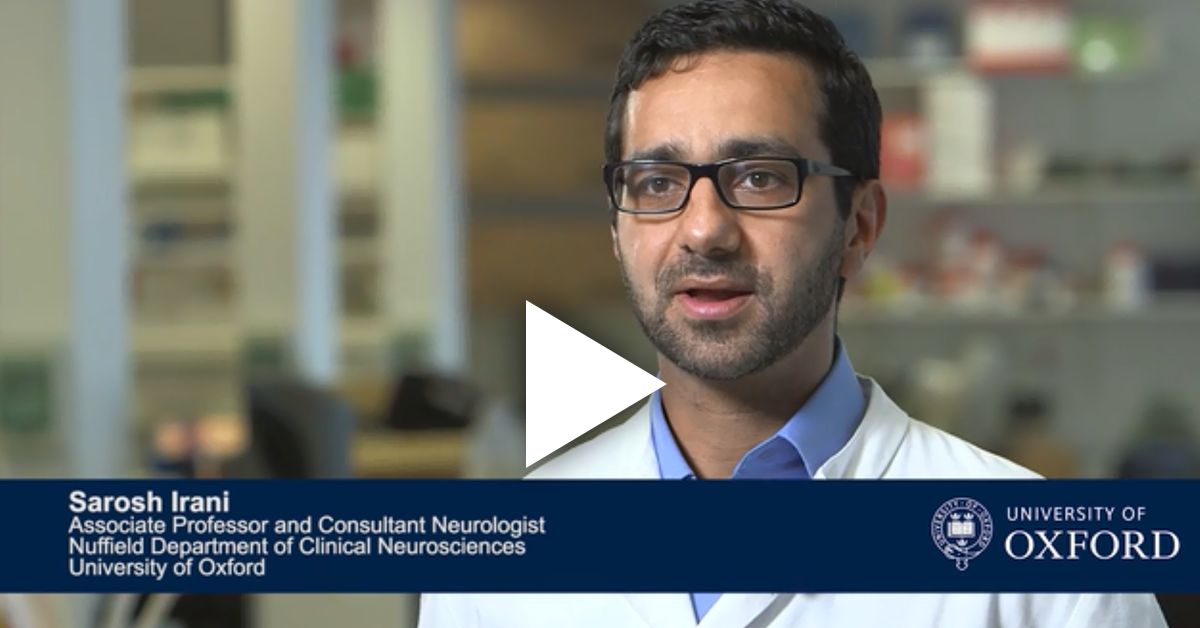Brain, awy010, https://doi.org/10.1093/brain/awy010
Published: 13 February 2018
Robert Wilson Mateusz Makuch Anne-Kathrin Kienzler James Varley Jennifer Taylor Mark Woodhall Jacqueline Palace M Isabel Leite Patrick Waters Sarosh R Irani
Watch Video >
Abstract
Autoantibodies to aquaporin-4 (AQP4) are pathogenic in neuromyelitis optica spectrum disorder (NMOSD). However, it is not known which B cells are the major contributors to circulating AQP4 antibodies nor which conditions promote their generation. Our experiments showed CD19+CD27++CD38++ circulating ex vivo antibody-secreting cells did not produce AQP4 antibodies under several culture conditions. To question whether other cells in circulation were capable of AQP4 antibody production, B cells were differentiated into antibody-secreting cells in vitro. Unfractionated peripheral blood mononuclear cells, isolated from 12 patients with NMOSD and a wide range of serum AQP4 antibody levels (91–26 610 units), were cultured with factors that mimicked established associations of NMOSD including T cell help, concurrent infections and cytokines reported to be elevated in NMOSD. Overall, the in vitro generation of CD19+CD27++CD38++ cells across several culture conditions correlated closely with the total IgG secreted (P < 0.0001, r = 0.71), but not the amount of AQP4 antibody. AQP4 antibody production was enhanced by CD40-ligand (P = 0.005), and by interleukin-2 plus toll-like receptor stimulation versus interleukin-21-predominant conditions (P < 0.0001), and did not require antigen. Across NMOSD patients, this in vitro generation of AQP4 antibodies correlated well with serum AQP4 antibody levels (P = 0.0023, r = 0.81). To understand how early within B cell lineages this AQP4 specificity was generated, purified B cell subsets were activated under these optimized conditions. Naïve pre-germinal centre B cells (CD19+CD27−IgD+) differentiated to secrete AQP4 antibodies as frequently as post-germinal centre cells (CD19+CD27+). Taken together, these human cell-culture experiments demonstrate that preformed B cells, rather than ex vivo circulating antibody-secreting cells, possess AQP4 reactivity. Their differentiation and AQP4 antibody secretion is preferentially driven by select cytokines and these cells may make the dominant contribution to serum AQP4 antibodies. Furthermore, as AQP4-specific B cells can derive from likely autoreactive naïve populations an early, pre-germinal centre loss of immunological tolerance appears present in some patients with NMOSD. This study has implications for understanding mechanisms of disease perpetuation and for rational choice of immunotherapies in NMOSD. Furthermore, the in vitro model presents an opportunity to apply condition-specific approaches to patients with NMOSD and may be a paradigm to study other antibody-mediated diseases.

